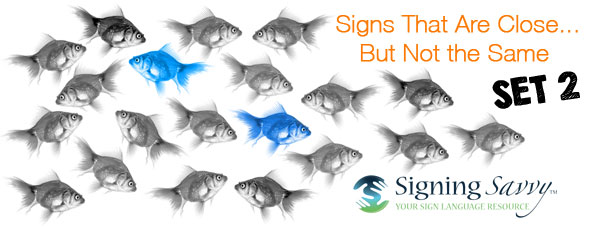
Signs That Are Close... But Not the Same - Set 2
This article is part of our “Signs That Are Close... But Not the Same” series, which highlights signs that look similar, but have different meanings.
The ASL signs shown below look similar, but are not the same. There are many ASL signs that when produced look similar, but in fact have a completely different meaning. Below you will find examples of such signs. Watch closely to see if you can see the differences. In addition, watch my eyebrows, look to see when I tilt my head or lean my body in a certain way, even what my mouth is doing. These nuances are called inflections and trust me, inflections matter.
1. Please vs. Enjoy
Both PLEASE and ENJOY have the dominate open flat hand make a circle over the chest, ENJOY also has the non-dominate hand circling over the stomach at the same time. To remember PLEASE, think of when something is pleasing it warms your heart. Think of all the different kinds of food you enjoy to remember ENJOY also circles over the stomach.
 |
2. Hot vs. Yell
HOT and YELL look similar, but HOT moves down from the mouth like you are forcefully pushing something hot away from your mouth and dropping it, while the gesture made when signing YELL indicates something loud is coming out of your mouth and going up into the air for everyone to hear.
 |
3. Brown vs. Beer
BROWN and BEER both use the B-hand moving downward on the face. You can remember BEER slides down the side of the mouth with a repeated motion by thinking of spilling a little bit as you drink and wiping it with your hand (and wiping again to make sure you got it all).
 |
4. Food vs. Eat a lot
FOOD and EAT use the same sign - the dominant modified O-hand (also called AND-hand) make repeated movements to the mouth, symbolizing bringing food to the mouth as you eat it. EAT A LOT uses an exaggerated repeated motion because when you EAT A LOT you eat and eat (and eat!). EAT A LOT can also be signed with two hands.
 |
5. Read vs. Dance
READ and DANCE both use dominant V-hands and non-dominant open palms. However, they are easy to remember because the gestures represent reading and dancing. When signing READ the V-hand represents eyes moving down the page (the open palm) while reading. When signing DANCE the V-hand represents legs dancing on a dance floor (the open palm).
 |
How can I figure out the difference between signs on my own?
If you see two signs that look close, but not the same, and you’re not sure, you may use Signing Savvy features to help you figure out the difference. All of our signs have sign descriptions and memory aids that members may access. Reading the sign description and memory aids for the signs will help you figure out the small differences between them that your eyes don’t catch at first. We also recommend using the pause and slow motion feature to slow down the video, so you may take a closer look. These features are available to Signing Savvy members.
Take a look, it's in a book!
These examples are aligned with the Visual Discrimination section of Lesson 5 (page 60) from Lessons and Activities in American Sign Language by Brenda E. Cartwright and Suellen J. Bahleda. Check out the book for more ASL Activities and watch for more examples from this series: “Signs That Are Close... But Not the Same.”
Resources
Signing Savvy is a participant in the Amazon Services LLC Associates Program, an affiliate advertising program designed to provide a means for sites to earn advertising fees by advertising and linking signingsavvy.com to Amazon properties. That means Signing Savvy may contain affiliate links. If you make a purchase after clicking on an affiliate link, your cost will be exactly the same regardless, but Signing Savvy will automatically receive a small commission. Your support is greatly appreciated and helps us continue to improve Signing Savvy!
 Brenda Cartwright is a Coda, seasoned interpreter, a master teacher, well known presenter, and author of several best selling sign language and interpreting textbooks from the RID Press. For 35 years Brenda was the Chair of the Sign Language Interpreter Program at Lansing Community College in Lansing, Michigan.
Brenda Cartwright is a Coda, seasoned interpreter, a master teacher, well known presenter, and author of several best selling sign language and interpreting textbooks from the RID Press. For 35 years Brenda was the Chair of the Sign Language Interpreter Program at Lansing Community College in Lansing, Michigan.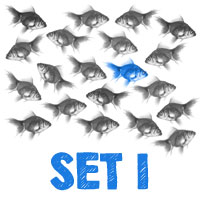 Signs That Are Close... But Not the Same - Set 1
Signs That Are Close... But Not the Same - Set 1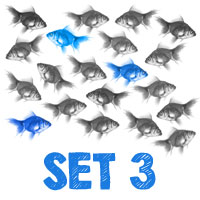 Signs That Are Close... But Not the Same - Set 3
Signs That Are Close... But Not the Same - Set 3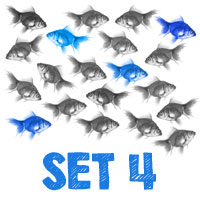 Signs That Are Close... But Not the Same - Set 4
Signs That Are Close... But Not the Same - Set 4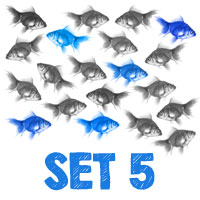 Signs That Are Close... But Not the Same - Set 5
Signs That Are Close... But Not the Same - Set 5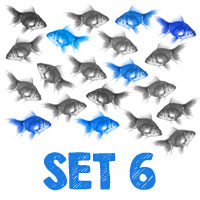 Signs That Are Close... But Not the Same - Set 6
Signs That Are Close... But Not the Same - Set 6


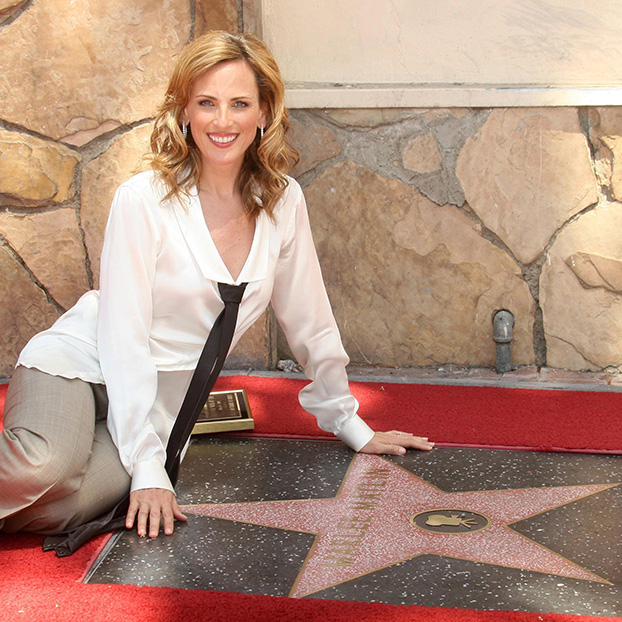

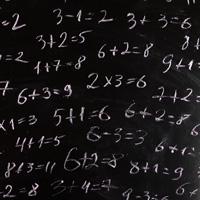
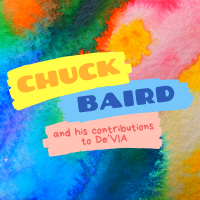

BillMonday, January 21, 2019
I am a complete ASL novice but I thoroughly and enthusiastically appreciate these "Signs that are close ..." lessons. I acknowledge that this is indeed a lot of extra work for you to produce these explanations but they are invaluable for precise communication and understanding.